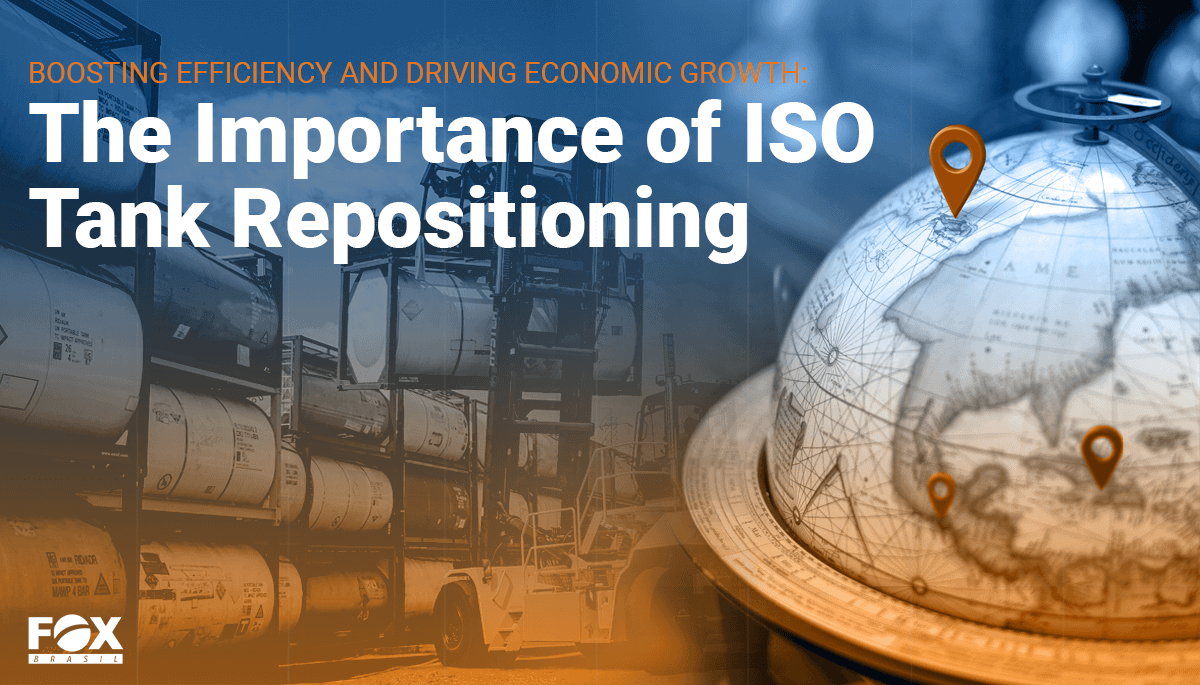Boosting Efficiency and Driving Economic Growth: The Importance of ISO Tank Repositioning

Understand Logistics & Freight
In global trade, the efficient movement of goods is paramount. At the heart of this process lies ISO tanks, versatile containers designed for transporting liquids, gases, and bulk materials. These tanks play a pivotal role in optimizing supply chains and fostering economic growth on a global scale.
ISO tanks are standardized containers built to withstand the rigors of transportation across various modes – be it by sea, rail, or road. Unlike traditional shipping methods that rely on drums or barrels, ISO tanks offer several advantages, including enhanced safety, reduced handling costs, and minimized product contamination risks.
However, the true magic happens when freight forwarders strategically reposition these ISO tanks to meet evolving market demands. Here’s why this practice is invaluable for the economy and the entire supply chain:
1. Minimizing Empty Runs
One of the biggest challenges in logistics is the phenomenon of empty container repositioning, where containers are transported back to their origin or left idle after delivery. This results in wasted resources and increased transportation costs. By leveraging their network and expertise, freight forwarders can optimize the utilization of ISO tanks, ensuring that they are continuously in motion, either filled with cargo or on their way to the next destination. This minimizes empty runs, reduces carbon footprint, and maximizes resource efficiency.
2. Balancing Supply and Demand
The dynamic nature of global trade often leads to imbalances in supply and demand across different regions. Freight forwarders play a crucial role in addressing these disparities by strategically repositioning ISO tanks to areas experiencing shortages or surpluses. Whether it’s delivering vital chemicals to a manufacturing hub or transporting food-grade liquids to meet consumer demands, the flexibility of ISO tanks enables swift response to market fluctuations, thereby stabilizing supply chains and preventing disruptions.
3. Promoting Intermodal Connectivity
ISO tanks seamlessly integrate with various modes of transportation, offering unparalleled flexibility and connectivity. Freight forwarders leverage this advantage to create efficient intermodal solutions that optimize transit times and reduce costs. By seamlessly transitioning between vessels, trains, and trucks, ISO tanks enable smooth cross-border movements, facilitating international trade and fostering economic integration between regions.
4. Driving Innovation and Sustainability
In an era of heightened environmental awareness, the logistics industry is under pressure to adopt sustainable practices. ISO tanks, with their reusable and durable design, epitomize the principles of sustainability. Freight forwarders further enhance this aspect by implementing innovative solutions such as modal shift, route optimization, and energy-efficient transportation modes. By repositioning ISO tanks in a manner that prioritizes sustainability, freight forwarders contribute to mitigating climate change and promoting responsible resource management.
5. Enhancing Competitiveness and Market Access
Efficient supply chains are the lifeblood of modern economies, enabling businesses to access global markets and remain competitive. By optimizing ISO tank repositioning, freight forwarders facilitate seamless trade flows, allowing businesses to reach customers faster and at lower costs. This enhanced market access not only drives economic growth but also fosters innovation and entrepreneurship, as companies leverage expanded market opportunities to diversify their products and services.
In conclusion, ISO tank repositioning by freight forwarders is not just a logistical task; it’s a catalyst for economic development and prosperity. By maximizing the efficiency of supply chains, minimizing wastage, and promoting sustainability, freight forwarders play a vital role in driving global trade and fostering a more interconnected world. As we navigate the complexities of the modern economy, the strategic management of ISO tanks remains a linchpin for success, powering growth, and resilience across industries and borders.